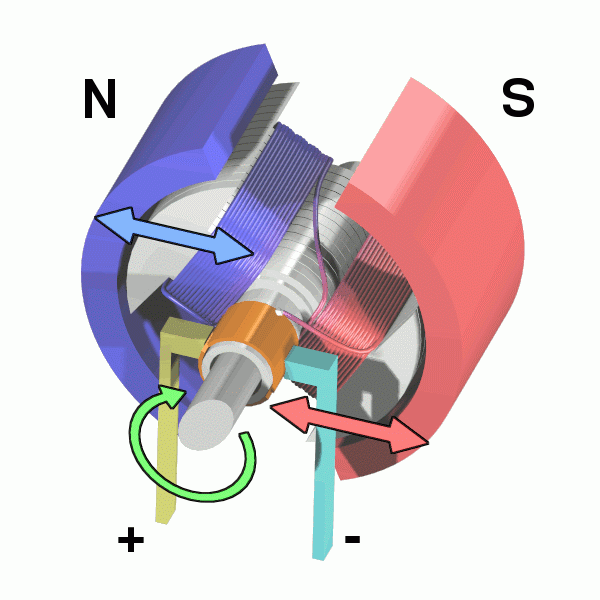
An electric motor is a device converting electrical energy into mechanical energy (generally a torque). This conversion is usually obtained through the generation of a magnetic field by means of a current flowing into one or more coils. Let’s see in detail How Electrical Motor Works?
Electric Motor Working
The rotation of motor is obtained due to the attractive force between two magnetic fields:
- One field is located on the rotor (the moving part).
- The second magnetic field is located on the stator (the body of the motor).
The electric motor working is based on the following points:
- At least one of the two magnetic field is generated by a solenoid carrying a current.
- Phase relation between the rotor and stator magnetic field (i.e. the load angle) must be always greater than 0° in order to keep the motor in motion (negative angles reverse the rotation).
- Output torque depends to both solenoid current and load angle.
- Motor rotation causes a back electro-motive force opposing the motion itself.
How Electrical Motor Works?

Electric motors are essentially inverse generators: a current through coils of wire causes some mechanical device to rotate.
The core principle underlying motors is electromagnetic induction. By Ampere’s law, the current induces a magnetic field, which can interact with another magnetic field to produce a force, and that force can cause mechanical motion.
A motor is basically a generator run backwards (using current to produce motion rather than motion to produce current), and in fact the modern era of practical motors was initiated by accident when one DC generator was accidentally connected to another in 1873, producing motion and leading Zenobe Gramme to realize that his generators could also be used as motors.
The first AC motors (synchronous and then induction) were invented by Tesla in the 1880s.
What are the different types of electric motors?
The following are the four most basic types of electric motors:
- Brushed DC
- Brushless DC
- Synchronous AC
- Induction
Like generators, electric motors consist of a stator and a rotor and the three ingredients: electric current, magnetic fields, and something rotating. A basic rule of thumb is that in an AC motor, as in an AC generator used for industrial power production, the magnet is on the rotor and the current flows in the stator. In most DC motors, the magnet is in the stator and the current is flowing in the rotor; hence the need for brushes.
LIKE WHAT YOU’RE READING?
CHECK OUT SOME OF OUR OTHER GREAT CONTENT HERE:
- WHAT IS A UNIVERSAL MOTOR ?
- WORKING OF AN INDUCTOR – EXPLAINED
- WORKING PRINCIPLE OF SYNCHRONOUS MOTOR
- SYNCHRONOUS MOTOR STARTING METHOD
- WHY THE SYNCHRONOUS MOTOR IS NOT SELF STARTING
- STEP UP TRANSFORMER: DEFINITION, CONSTRUCTION, WORKING & APPLICATIONS
- LIMITATIONS OF OHM’S LAW
- INDUCTION MOTOR: WORKING PRINCIPLE, TYPES & APPLICATION
- DEFINITION FOR ELECTRICAL CIRCUIT
- DEFINITION & FORMULA OF POWER IN ELECTRICAL
- FORMULA FOR ELECTRICAL CURRENT – EXPLAINED
- VOLTAGE DEFINITION, FORMULA & UNIT




5 Comments